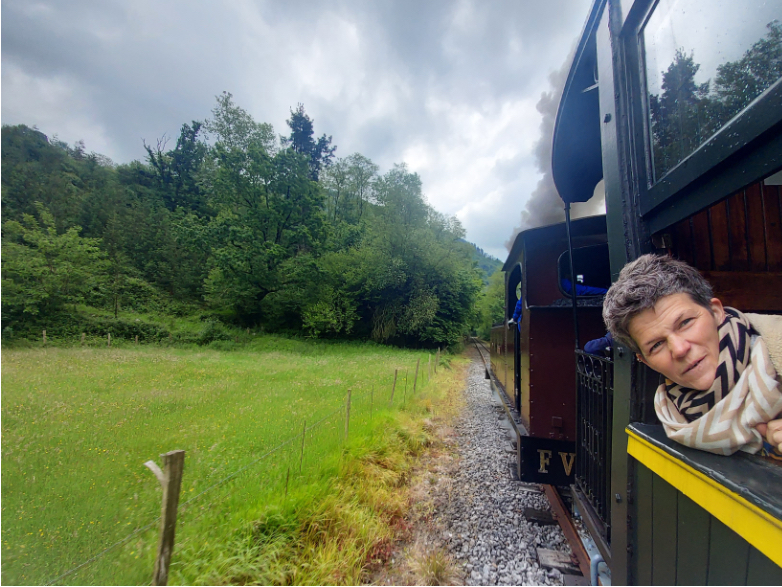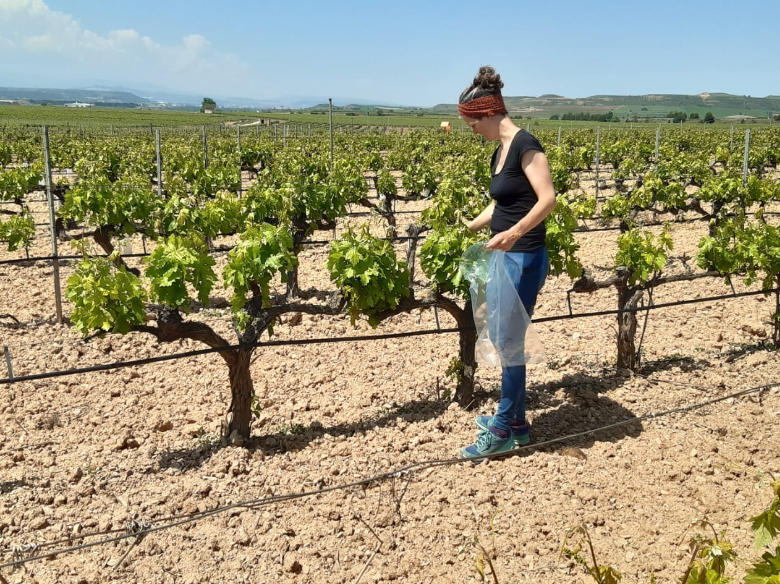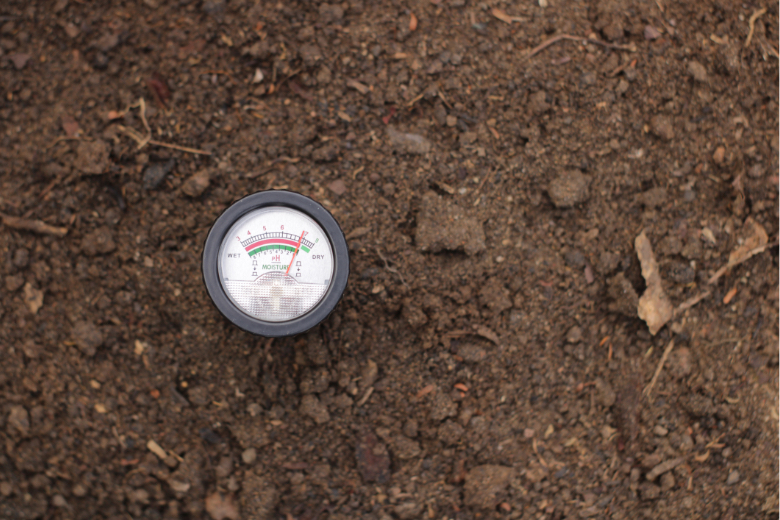Lur Epelde lives up to her name, which means “Earth” or “Mother Earth” in Basque, by researching phytoremediation (the use of plants to remediate unhealthy soils) and the effects of pesticide residues and rising temperatures on antibiotic resistance in agroecosystems.
As a scientist, Lur Epelde (Markina-Xemein, 1981) puts it down to chance and luck, but she can’t help but find it amusing that she has ended up living up to her name, which, coincidently, means Earth or Mother Earth in Basque. The microbial ecologist, currently the coordinator of the Soil Microbial Ecology Group at Neiker, the Basque Institute for Agricultural Research and Development, is an expert in phytoremediation, which she defines as “the use of plants to remediate contaminated soils.”

Some plants literally extract contaminants from the soil in a process known as phytoextraction. Others reduce the risk by immobilising contaminants in the rhizosphere, known as phytostabilisation. Both are cost-effective and environmentally friendly strategies, but they are slow. A short-term solution would be phytomanagement, or integrating phytoremediation with a use that provides economic, environmental and social benefits during remediation; for example, planting timber or other species that reduce biodiversity loss.
According to the FAO, one third of the world’s soils are degraded. The EU Soil Observatory (EUSO) estimates that between 60% and 70% of European soils suffer from some form of degradation: loss of organic matter, erosion, loss of biodiversity, salinisation and sealing, pollution, etc. “These are very rough estimates,” warns Epelde, who advocates a good knowledge of the resource as a first step to its proper management. “By expanding our knowledge of soils, we will improve the diagnosis of their health,” she insists.
“Some plants literally extract pollutants from the soil and others reduce the risk by immobilising pollutants in the rhizosphere. Both are cost-effective and environmentally friendly strategies, but they are slow”
Neiker functions as a soil hospital, studying the composition and characteristics of earth to make diagnoses based on a wide range of physico-chemical and, above all, biological descriptors. Lur Epelde has been part of Neiker for 18 years, since she wrote an email to Carlos Garbisu, now the scientific director, right after graduating, asking if she could work with him. She had heard him give a talk during her final year of biology at the University of the Basque Country (UPV/EHU). “He captivated me with his enthusiasm and passion for science and nature conservation,” she recalls. “I owe him practically everything I am.”

In 2009, Epelde defended her doctoral thesis, Evaluation of the efficiency of metal phytoremediation processes with microbiological indicators of soil health. Since then, she has been pursuing the healing of diseased soils by restoring their fungal and bacterial communities, which are largely responsible for their functioning and resilience to disturbances. She says that soil was a black box until advances in molecular biology, particularly those associated with massive sequencing technologies, opened it up. “With these techniques, we can put a name and a surname to the myriad of micro-organisms present; we know not only who is there, but also what they are doing,” she says. “Artificial intelligence also allows us to collect all the existing information on biological communities and other descriptors of their health, create digital twins and map and model these properties in space-time, thanks to machine learning.”
“Between 60% and 70% of European soils suffer from some kind of degradation source: loss of organic matter, erosion, loss of biodiversity, sealing, contamination…”
Her team has moved from working on soils with a history of industrial activity and high levels of contamination to agricultural soils and emerging and global challenges such as antibiotic resistance. “We study the spread of these resistances in agroecosystems, from the faeces of animals treated with antibiotics, which are used to produce organic soil conditioners for the crops we consume, to the most complex and biodiverse habitat on the planet: the soil,” she explains.
Recently, the researcher has been doing field experiments with a heating cable buried in the soil to study the effects of pesticide residues and rising temperatures on antibiotic resistance in agro-ecosystems. Her hypothesis, pending laboratory analysis of samples, is that heat stimulates the proliferation of resistance genes due to increased biological activity, and that the presence of pesticides also plays a role, “through co-selection mechanisms of soil bacteria.” The University of Wageningen (Netherlands) liked the idea and wants to replicate it.

Wageningen is one of the leading centres for agricultural research in Europe, along with Rothamsted Research in the UK. Neiker works in coordination with these and other institutions thanks to projects funded by the European Union. Epelde regards her international research stays—at the Netherlands Institute of Ecology, the Institute for Environmental Genomics at the University of Oklahoma, the Department of Genetics in Ecology at the University of Vienna and the Lawrence Berkeley National Laboratory—as an injection of inspiration and motivation, which has also allowed her to build up a network of collaborators, which is very important in scientific work.
“AI makes it possible to gather all the existing information on biological communities and other descriptors of their health, create digital twins, and map and model these properties in space-time”
These researchers share a common concern for soil conservation, “traditionally the most neglected resource in environmental protection policies.” The current context of global change is leading to recognition of its key role in providing food (95% of food comes from the soil), in mitigating and adapting to global warming (it is a regulator of the water cycle, the largest terrestrial carbon sink) and in preserving biodiversity (some 59% of the planet’s species live under our feet). “It is more than ever at the centre of the political agenda. Europe has set ambitious targets to halt its decline. Now is the time to achieve them,” concludes Epelde.
Health cards. These are a resource for anyone to easily diagnose the state of health of their soil, for example, by digging up a block of soil and counting the number of earthworms. A manual explains which health descriptors can be measured, how to do it correctly, what each one means and what ranges are considered “good”, “acceptable” and “poor”. Lur Epelde’s research group has just launched LURZAIN, a web application that allows the results of these measurements to be entered and helps those interested in diagnosing and treating their soil.
Comments on this publication